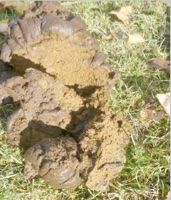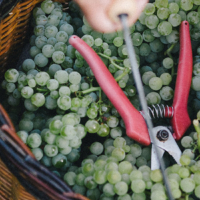Biodynamics, Cow Dung and Best Practice: A Viticulturist Journey by Jared Connolly
Harvests Article – Summer 2016
My biodynamic journey began in 1999 while studying organic growing with Holger Kahl at Seven Oaks in Christchurch. We were fortunate to have Ian Henderson teach our class the basics of animal husbandry at Milmore Downs, and I had the opportunity to plough paddocks and dig soil pits at Terrace Farms with Geoff and Ira Wilson. We also picked chamomile flowers at Hohepa Farm in Halswell with Marinus La Rooij.
All three of these occasions in my two years of learning ignited a very strong desire to create a life working and learning with this approach called biodynamics.

Shortly after completing my Seven Oaks training, I had the opportunity to dedicate a little over a decade to one very special property where we worked with biodynamics. I was blessed by the guidance of Peter Proctor and Rachel Pomeroy, who are now lifelong friends.
All three of these occasions in my two years of learning ignited a very strong desire to create a life working and learning with this approach called biodynamics.
During long drives around Otago and Southland with Peter searching for dung, and many, many hours of applying the farmer’s footsteps (often said to be the best fertiliser), Peter and Rachel introduced to me the importance of best practice.
I worked for very generous employers who encouraged and supported my learning, sending me throughout New Zealand, Australia, North America and India so I could truly understand the quality of farming and the quality of produce that come from biodynamic producers.
Our visit to India with Peter and Rachel was a life-changing experience on every level. We saw a range of biodynamic farms, gardens and communities. All of the places we visited showed a huge commitment to cow dung, compost, cowpat pit, liquid manures such as panchagavya* and green manure crops.
My real learning on the tour came from seeing people take on many familiar challenges and apply very similar solutions in a completely different world. These observations gave me confidence.
In my travels I soon saw the diversity of thinking and practices in the biodynamic world and gained an incredibly useful insight of how important farm individuality is.
I was motivated to create a biodynamic approach that was individual to the place I was privileged to caretake.
My ideal for a vineyard is to have a dung herd of cattle fed from plants from the place, which are digested and then returned to that place.
Jared Connolly
The most important message from all great farmers I have interacted with is to strive for excellence by applying a clear understanding of best practice. Make sure you remain patient, that you are not broken by failure. Instead take on the observation of your failures and improve. Biodynamics will enhance the quality of your basic best practice, but it will not take a bad approach and make it good.
Best practice is now second nature for Rita and me in all aspects of life, and for that we are forever grateful.
This became embedded for me in all farming or viticultural decisions. After a long day of frost-fighting, viticulture
and livestock care, I would be taking off my boots and something would need attention.
Jared, one of the cows is out!”
“Oh!”
Jared: “What should I do? I am so tired….”
Rita: “What is best practice?”
So boots go back on and out I go. There are no short cuts, just best practice.
My biodynamic approach to best practice includes cows, with plenty of cow dung applied to the soil and vines via cowpat pit, dung paste, solid compost and compost tea. Sheep and poultry in the vineyard will support this approach through grazing and cultivating the vineyard floor.

The cows should have pasture with plenty of shelter, dry feed and tree fodder, supported by trough drenching of cider vinegar, garlic, nettle, comfrey and seaweed especially around the full moon. My ideal for a vineyard is to have a dung herd of cattle fed from plants from the place, which are digested and then returned to that place.
You can create your own biodynamic approach, as in organics, permaculture, natural farming, foraging, viticulture, horticulture or anything else. With good planning you can create your best practice and your own standards to achieve what is best for you and your place
My advice is:
- Start with a management plan.
- Apply a rhythm.
- Keep it simple and achieve the very basic practice in every moment.
- Be a farmer first; make decisions based on the conditions.
- Develop a deep understanding for human, plant, soil and animal health.
- Work hard to make the very best solid compost with a fresh cow manure content of around 25% of the volume once the compost is made.
- Stop comparing and start improving.
- Invite people into your place as often as possible. These people will become your biodynamic barometer.
In the biodynamic ideal, you strive for a self-contained system, so it is ideal to have cows as part of your farm. If you cannot have cows, then go find a farm close by and start connecting with those who do have cows.
May all horticulturists get more cows, and create more cow dung and more biodynamic solid compost for themselves and for our community.
Park up the vision of what you think biodynamics is today and concentrate on the biodynamics of the future. Make it a practical approach to enhance your everyday best practice.
* Panchagavya or panchakavyam uses five cow products. They are cow dung, urine and milk plus curd and ghee. They are mixed and ferment.
S


